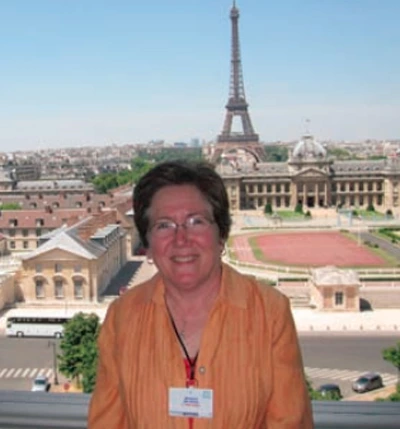Public Policy Review

Summer time is often a time for travel and reflection. Reflecting on different aspects of my work during my summer travels, I see a constant theme emerging — the importance of effective partnerships. By partnerships, I mean people working together to effectuate change and improve water management. For example, our annual conference, dedicated to fostering good water and environmental leadership, relied on partnerships for its success.
This was fitting, that a conference devoted to leadership should rely on partnerships since partners work together as a team, and teams require effective leadership to be productive. Partnerships imbued with the sense of good leadership enabled many individuals to work countless hours to develop an interactive and varied conference program. The numerous and varied perspectives resulted in a conference design that attracted much acclaim.
In the larger context, I think we all recognize that partnerships are fundamental to resolving the water management challenges we face. The legislatively required Water Resources Development Commission (Chapter 329 of Second Regular Session of the 49th Arizona Legislature) demonstrates the critical importance that varied perspectives be represented. The newly formed commission consists of 15 members, appointed by the director of the Arizona Department of Water Resources, along with nine ex officio and six legislative members. Although it is not explicitly required to develop a state water plan I am encouraged that the commission is charged with assembling much of the information that would go into a state water plan or needs assessment.
Elements include: compiling the projected water needs of each county in the next 25, 50 and 100 years; identifying and quantifying water supplies currently available in each county; identifying potential water supplies for use in meeting additional demands for the same time periods; identifying any legal and technical issues associated with the use of those supplies; and identifying potential mechanisms to finance the acquisition of water supplies and infrastructure required to treat or deliver water supplies. Finally, the commission is asked to make recommendations regarding the need for further studies and evaluations. All of this work is to be completed by October 1, 2011.
This is quite an undertaking, especially for ADWR, an agency that suffered a substantial budget cut and staff reduction to less than 100. Many will have to work in partnership for the commission to meet its mandate. The law explicitly identifies as sources of technical support ADWR, the Central Arizona Water Conservation District, the Arizona Water Banking Authority and rural water study groups. I would expect technical assistance from many more partners, including the water using sectors, the universities and the U.S. Geological Survey, among others.
Partnerships are likewise extremely important to the U.S. Mexico Transboundary Aquifer Assessment Program, in which I have been involved since its inception. The University of Arizona is working closely with USGS, the U.S. and Mexican Sections of the International Boundary and Water Commission, Mexican state and federal water agencies, ADWR and others to implement the Arizona Sonora portion of this program. Differences in legal structures and the roles of government agencies have required us to carefully work through multiple layers of agreements to undertake binational work in a manner officially recognized by both countries.
In early July, I had the privilege of discussing the importance of partnerships at the Scientific Segment of the 19th Session of the International Hydrological Programme Intergovernmental Council, housed at UNESCO in Paris. The title of the session was “Hydrological Sciences for Policy Responses to an Uncertain Global Change Future.” The only social scientist of the six speakers, I highlighted our efforts to build a shared vision of approaching priority issues in the Santa Cruz and San Pedro aquifers. Some factors affecting policy responses to global change across national borders are very similar to those within our state. They include: differing rates of urbanization, population growth and economic growth; predictions for hotter and drier climate; and aquifer recharge that depends on ephemeral, intermittent and/or effluent discharges. I underscored the importance of collaboration of multiple agencies and universities to aquifer assessment and other studies to provide decision makers with information needed for water management.
Whether the task is developing leadership or furthering sound water management at the transboundary, state, regional or local water management level, it takes time to establish and maintain effective partnerships. Perseverance, flexibility, creativity, respect for different perspectives, appreciation of the need for multiple types of expertise, and good and regular communication are all required.
Turning to another matter, this one closer to home, a time of transition is at hand regarding an issue we at the Water Resources Research Center take a great deal of pride in — communication. Joe Gelt, editor of the AWR newsletter, who has been partially retired since 2008, will be making a full-time commitment of it. This newsletter is his last. Joe was involved at the beginning, when this newsletter was initiated in 1992, and has been editor and the primary writer since then. His many features and articles, covering a broad range of issues over the years, have been a valuable source of information for many people interested in water. His work has brought him and the WRRC numerous accolades. We are going to miss his contributions tremendously and hope he will think of us as he writes interesting articles in his spare time.
Given our resource constraints, we are now considering our options for the format (possibly moving to on-line publication only) and frequency of the newsletter. Meanwhile we will continue to print the annual Arroyo newsletter each winter, with the next issue focusing on desalination. I welcome any suggestions/comments you may have. My email address is smegdal@email.arizona.edu.

